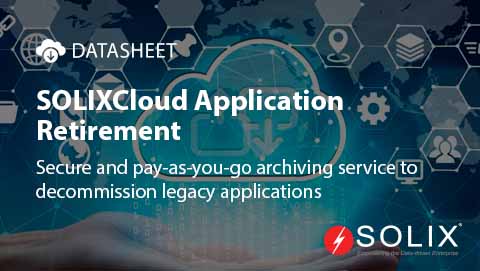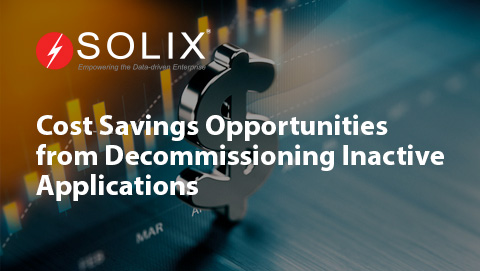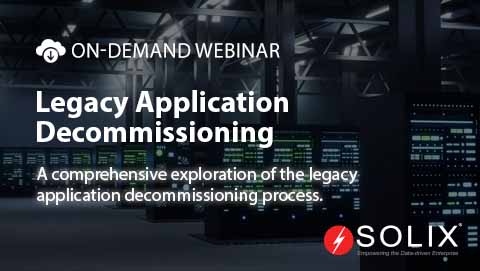Legacy System vs New System
As technology continues to evolve at a rapid pace, many businesses find themselves facing the dilemma of whether to stick with their legacy systems or upgrade to new, more efficient solutions. The decision can be daunting, as legacy systems often come with ingrained processes and data that are integral to the company’s operations. However, the limitations of legacy systems, such as lack of flexibility, security vulnerabilities, and scalability issues, can hinder the growth and competitiveness of a business in today’s digital landscape. On the other hand, new systems offer advanced features, improved performance, and better integration capabilities, but the transition can be complex and costly.
Legacy System vs New System: A Real-Life Scenario
- Imagine for a second your in a scenario where a company, let’s call it Acme Corporation, is still relying on a legacy system for its day-to-day operations. The system, although reliable, is outdated and unable to keep up with the growing demands of the business. Acme Corporation recognizes the need for a new system that can provide better performance, enhanced security, and greater scalability. However, the thought of migrating years’ worth of data and processes to a new system seems like a daunting task.
- Enter Solix Solutions, a game-changer in the field of data management and application retirement. Solix offers a comprehensive suite of services that can help Acme Corporation seamlessly transition from their legacy system to a new, modern solution. By leveraging Solix’s expertise in data archiving, application retirement, and compliance management, Acme Corporation can retire their legacy applications at a low, fixed monthly cost, while ensuring structured, unstructured, and semi-structured data is securely archived and easily accessible.
How Solix Can Save Time and Money on Legacy System vs New System
By partnering with Solix, Acme Corporation can achieve significant cost savings and efficiency gains. Solix’s SolixCloud application retirement and decommissioning enables organizations to rationalize their application portfolio, reduce infrastructure costs, and meet compliance goals with policy-based data retention and role-based access. Moreover, Solix’s Enterprise Archiving Solutions provide a fully managed, cloud-scale archive repository for less-active enterprise data, enabling Acme Corporation to improve application performance, optimize infrastructure, and reduce costs.
Key Benefits of Solix Solutions:
- Rete and decommission legacy applications at a low, fixed monthly cost
- Support structured, unstructured, and semi-structured data
- Meet compliance goals with policy-based data retention and legal hold
- Eliminate maintenance, infrastructure, and licensing costs of legacy applications
- Improve application performance and optimize infrastructure
- Manage data growth and reduce costs
- Achieve compliance objectives with policy-based data retention
In Wind up, the decision between sticking with a legacy system or upgrading to a new, modern solution is a critical one for any business. Although the transition may seem daunting, with the right partner like Solix Solutions, the process can be streamlined and cost-effective. By retiring legacy applications, optimizing data management, and embracing cutting-edge technologies, businesses like Acme Corporation can stay competitive, compliant, and future-proof in today’s digital world. So, don’t let your legacy system hold you back – make the switch to a new system with Solix and reap the benefits of enhanced performance, security, and scalability.
To learn more about how Solix can help your business navigate the legacy system vs new system dilemma, contact us at info@solix.com. And don’t forget to enter your email on the right for a chance to win $100 and start your journey towards a more efficient and cost-effective data management solution.
I hope you enjoyed learning about legacy system vs new system, always if you have more questions about legacy system vs new system, use the form above to reach out to us. Learn more about Solix solutions and discover how we can help you migrate to a new system. Additionally, you can read our whitepaper, Cloud Content Management for Enterprise Workgroups, to learn more about the benefits of cloud-based content management.
DISCLAIMER: THE CONTENT, VIEWS, AND OPINIONS EXPRESSED IN THIS BLOG ARE SOLELY THOSE OF THE AUTHOR(S) AND DO NOT REFLECT THE OFFICIAL POLICY OR POSITION OF SOLIX TECHNOLOGIES, INC., ITS AFFILIATES, OR PARTNERS. THIS BLOG IS OPERATED INDEPENDENTLY AND IS NOT REVIEWED OR ENDORSED BY SOLIX TECHNOLOGIES, INC. IN AN OFFICIAL CAPACITY. ALL THIRD-PARTY TRADEMARKS, LOGOS, AND COPYRIGHTED MATERIALS REFERENCED HEREIN ARE THE PROPERTY OF THEIR RESPECTIVE OWNERS. ANY USE IS STRICTLY FOR IDENTIFICATION, COMMENTARY, OR EDUCATIONAL PURPOSES UNDER THE DOCTRINE OF FAIR USE (U.S. COPYRIGHT ACT § 107 AND INTERNATIONAL EQUIVALENTS). NO SPONSORSHIP, ENDORSEMENT, OR AFFILIATION WITH SOLIX TECHNOLOGIES, INC. IS IMPLIED. CONTENT IS PROVIDED "AS-IS" WITHOUT WARRANTIES OF ACCURACY, COMPLETENESS, OR FITNESS FOR ANY PURPOSE. SOLIX TECHNOLOGIES, INC. DISCLAIMS ALL LIABILITY FOR ACTIONS TAKEN BASED ON THIS MATERIAL. READERS ASSUME FULL RESPONSIBILITY FOR THEIR USE OF THIS INFORMATION. SOLIX RESPECTS INTELLECTUAL PROPERTY RIGHTS. TO SUBMIT A DMCA TAKEDOWN REQUEST, EMAIL INFO@SOLIX.COM WITH: (1) IDENTIFICATION OF THE WORK, (2) THE INFRINGING MATERIAL’S URL, (3) YOUR CONTACT DETAILS, AND (4) A STATEMENT OF GOOD FAITH. VALID CLAIMS WILL RECEIVE PROMPT ATTENTION. BY ACCESSING THIS BLOG, YOU AGREE TO THIS DISCLAIMER AND OUR TERMS OF USE. THIS AGREEMENT IS GOVERNED BY THE LAWS OF CALIFORNIA.
-

-

-
 White Paper
White PaperCost Savings Opportunities from Decommissioning Inactive Applications
Download White Paper -

